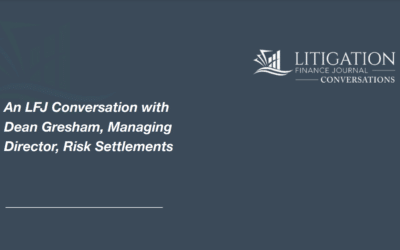Cy Pres Overview
“Cy pres” comes from the French expression cy pres comme possible, which means “as near as possible.”¹ In the class action world, cy pres distributions are relevant when the parties are unable to distribute some or all the settlement money to class members. Instead of returning the money to the defendant, parties have often invoked cy pres and directed funds to third-party organizations.
In recent years, however, this practice has come under fire. In 2013’s Marek v. Lane, Chief Justice Roberts authored a statement accompanying the Court’s decision to deny certiorari in a case that featured a class action settlement in which nearly all the monetary relief that didn’t go to the lawyers went to a cy pres recipient. Chief Justice Roberts warned that because cy pres remedies “are a growing feature of class action settlements,” in “a suitable case, this Court may need to clarify the limits on the use of such remedies.” ²
Six years later, it appeared that case had arrived. In Frank v. Gaos, the Supreme Court granted certiorari to hear a challenge to a cy pres class action settlement into which Google had entered, featuring a $5.3 million payment that went to (i) plaintiffs’ counsel; and (ii) six organizations associated with protecting privacy on the internet. But rather than deciding the case on the merits, the Supreme Court remanded on jurisdictional grounds. Justice Thomas, dissenting, wrote that a “cy pres-only” settlement provided members of the class “no damages and no other form of meaningful relief,” which, in his view, “rendered the settlement unfair and unreasonable under [FRCP] 23(e)(2).”³
Since then, however, the Supreme Court has not meaningfully stepped into the void, leaving lower courts to wrestle with cy pres’ thorny issues. Which leads us to the most recent entry in this field.
Hawes v. Macy
Hawes v. Macy’s Inc.⁴ is a case about sheets; specifically, whether certain bed sheets sold by Macy’s featured the thread count listed on the packaging. As Judge Douglas Cole of the Southern District of Ohio cracked wisely, after five years of litigation, the parties sought a settlement “to put the matter to bed.” Get it?
The proposed nationwide class action settlement was run-of-the-mill. A $10.5 million common fund, with claimants entitled to receive $2.50 without proof of purchase, while those with proof of purchase entitled to receive $7.50 per set of sheets bought during the class period. For the latter category, the agreement provided for the possibility of a second distribution. If there were funds remaining after attorneys’ fees, class representative incentive awards, administrative expenses, and the initial round of class payments, then, if it was “economically feasible,”⁵ the with-proof claimants would receive a pro rata share of the remaining funds, but “in no event … will the second distribution amount cause any Settlement Class Member to receive more than 50% of the amount paid by that class member for [the sheets] for which they submitted an Eligible Claim.” ⁶ If such a second distribution was not economically feasible or if funds remained after it, then the remaining funds were slated to go, via cy pres, to the Public Interest Research Group (“PIRG”), a “nonprofit advocacy organization that the parties chose.”⁷
In deciding whether to grant final approval to the settlement, Judge Cole zeroed in on the cy pres award as a major problem. According to Judge Cole, the Eighth Circuit has two “helpful limiting principles” when it comes to cy pres. First, have class member claimants “been fully compensated” and “further distribution…is not feasible”?⁸ Second, is the cy pres recipient one that “relates directly to the injury alleged in [the] lawsuit and settled by the parties”? ⁹
The court found that while the first factor was satisfied, the second was “where the parties [went] astray.” Specifically, because PIRG “does no work addressing false or misleading labeling for bed sheets, textiles more generally, or even false advertising as a category,” and because PIRG “uses portions of its funds to donate to other organizations,” the court “can discern no way in which a potential multi-million dollar award to PIRG is the ‘next best use’ for a class fund created to settle consumer fraud claims stemming from inaccurate bed sheet thread counts.”¹⁰ In a pithy retort, Judge Cole wrote that “Article III courts resolve cases and controversies; they are not a legislature that appropriates funds in pursuit of the public good.”¹¹ Accordingly, the court rejected the settlement due to “this single issue.” ¹²
Lessons Learned
At the risk of overstating the significance of one district court case, there are some valuable practitioner insights available from Hawes.
First, given the uncertainty at play, cy pres awards should be avoided in class action settlements. In Hawes, this whole issue could have been sidestepped with an agreement to increase class members’ benefits pro rata so that there was no money left to be distributed. Introducing a cy pres benefit (and beneficiary) creates settlement approval problems and provides objectors with a target to shoot at.
Second, if you are going down the cy pres path, you must inform the class, through the relevant notice, of this possibility. Judge Cole was perplexed at the Hawes’ parties’ failure to do this, as the notice therein failed to articulate even the possibility of a cy pres award, much less the third-party that would be receiving it.
Third, a cy pres recipient truly must be the “next best use” of the funds and not just a Larry David-like “pretty, pretty good” use of the funds. As cy pres continues to garner critical attention from the courts, assessments like the one in Hawes will likely become more common. So, pick wisely.
Fourth, practitioners should know that there is an alternative to a common fund with cy pres settlement. Indeed, claims-made settlements, through which a defendant is responsible for payment based only on the total number of claims filed by class members, obviate the need for a cy pres component. And dispelling an incorrect notion, federal courts routinely approve claims-made settlements.¹³
***
Certum Group, the industry leader in structuring class action settlements, can help defendants in class action litigation evaluate the litigation options and design an optimal settlement structure that is backed by full risk transfer to an insurer. Certum Group offers two insurance solutions for defendants in class action litigation.
Class Action Settlement Insurance (CASI) provides companies with the certainty they need to get back to business. It is the only product on the market that allows companies to mitigate, cap, and transfer the financial risk of settlement in existing class action litigation. Designed by Certum Group in response to businesses’ need for financial certainty in class action lawsuits and resulting settlements, CASI eliminates the unintended consequences of settlement and helps businesses exit litigation for a known, fixed cost.
Litigation Buyout (LBO) Insurance provides companies with the ability to successfully ring-fence litigation exposure and transfer the full financial risk of class action, antitrust, and non-class litigation. With LBO Insurance, the insurance carrier takes on the financial risks and liabilities for businesses – at any time before settlement and for a known, fixed cost. In the context of an M&A transaction or financing, LBO Insurance negates the requirement for the use of escrows or indemnities, providing certainty and finality to both parties to the transaction.
Contact us today to learn more about our creative insurance solutions to resolve existing or to ring-fence threatened or existing litigation for a known, fixed cost.
***
- https://fedsoc.org/commentary/fedsoc-blog/cy-pres-is-it-legal-and-will-the-supreme-court-decide.
- 134 S. Ct. 8, 9 (2013).
- 139 S. Ct. 1041, 1047 (2019) (Thomas, J., dissenting).
- 1:17-cv-754 (S.D. Oh.) (Dkt. No. 169) (“Op.”).
- The parties were obligated to “cooperate in good faith to determine whether it is economically feasible to make a second distribution.” Id. (Dkt. No. 143-2 at § 6.3.)
- Id.
- While Section 6.4 of the Settlement Agreement named PIRG as the intended cy pres recipient (an “organization which has as its purpose the advancement of consumer protections and rights”), the notice the class received “said nothing about the possibility of a cy pres award, did not disclose that any of the common fund could go to any third party, and did not name PIRG as the chosen recipient for such funds.”
- Note, fully compensated “does not necessarily mean the class is afforded the entire relief sought in the complaint. Rather, the Court must make its own assessment of the damages that would be recoverable by class members.” Op. at 33.
- Id. at 34.
- Id. at 35-37.
- Id. at 40.
- Id. at 41.
- See, e.g., Sharpe v. A&W Concentrate Co., 1:19-cv-00768 (E.D.N.Y.) (final approval granted Nov. 15, 2023); In re Procter & Gamble Aerosol Prods. Marketing and Sales Practices Litig., 2:22-md-03025 (S.D. Ohio) (final approval granted June 16, 2023); Honigman v. Kimberly-Clark, 2:15-cv-02910 (E.D.N.Y.) (final approval granted June 12, 2023); Browning v. Anheuser-Busch, LLC, 4:20-cv-00889 (W.D. Mo.) (final approval granted Dec. 19, 2022); Ramirez v. HB USA Holdings, Inc., 20-cv-1016 (C.D. Cal.) (final approval granted July 20, 2022).







